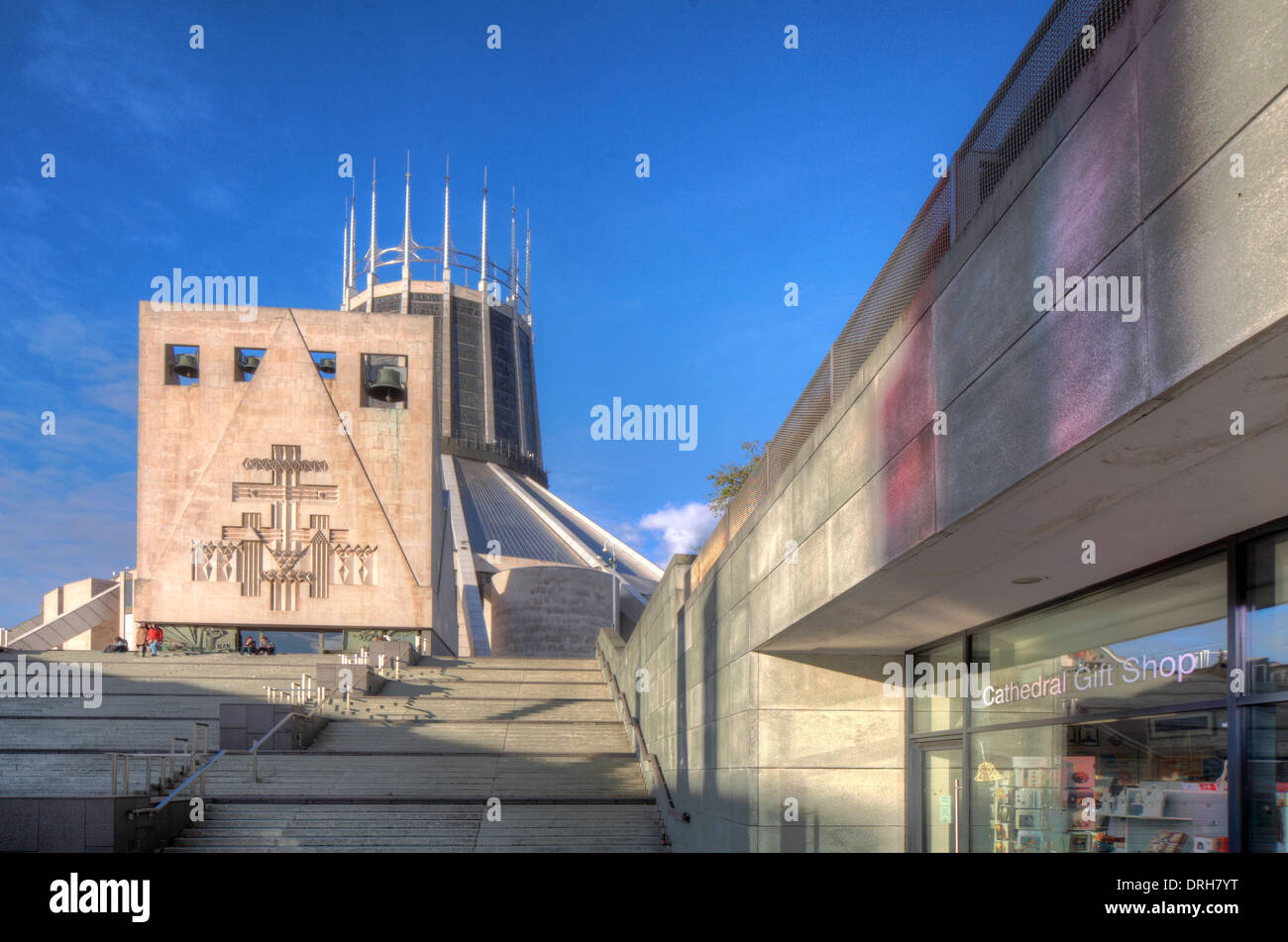Liverpool Catholic Metropolitan Cathedral of Christ The King , England UK

Image details
Contributor:
Tony Smith / Alamy Stock PhotoImage ID:
DRH7YTFile size:
58.9 MB (2.2 MB Compressed download)Releases:
Model - no | Property - noDo I need a release?Dimensions:
5573 x 3692 px | 47.2 x 31.3 cm | 18.6 x 12.3 inches | 300dpiDate taken:
5 October 2013Location:
Mount Pleasant, student areas, England, UKMore information:
Metropolitan Cathedral of Christ the King (usually known as Liverpool Metropolitan Cathedral) is the cathedral of the Roman Catholic Archdiocese of Liverpool in Liverpool, England. The cathedral is the seat of the Archbishop of Liverpool.The Grade II* Metropolitan Cathedral is one of Liverpool's many listed buildings. It is sometimes known locally as "Paddy's Wigwam" or the "Mersey Funnel", especially for tourists, but these are less common terms locally within the City. The cathedral's architect, Frederick Gibberd, was the winner of a worldwide design competition. Construction began in 1962 and took five years. Earlier designs for a cathedral were proposed in 1853, 1933, and 1953, but none was completed. During the Great Irish Famine (1845–1852) the Catholic population of Liverpool increased dramatically. About half a million Irish, who were predominantly Catholic, fled to England to escape the famine; many embarked from Liverpool to travel to North America while others remained in city.[5] Because of the increase in the Catholic population, the co-adjutor Bishop of Liverpool, Alexander Goss (1814–1872), saw the need for a cathedral. The location he chose was the grounds of St. Edward's College on St. Domingo Road, Everton.[6] In 1853 Goss, then bishop, awarded the commission for the building of the new cathedral to Edward Welby Pugin (1833–1875). By 1856 the Lady Chapel of the new cathedral had been completed. Due to financial resources being diverted to the education of Catholic children, work on the building ceased at this point and the Lady Chapel – now named Our Lady Immaculate – served as parish church to the local Catholic population until its demolition in the 1980s.